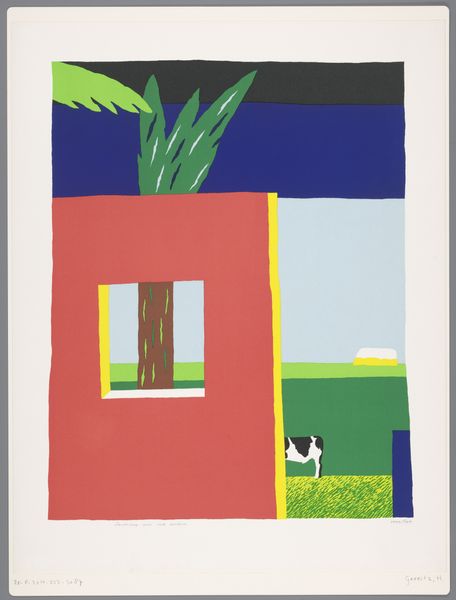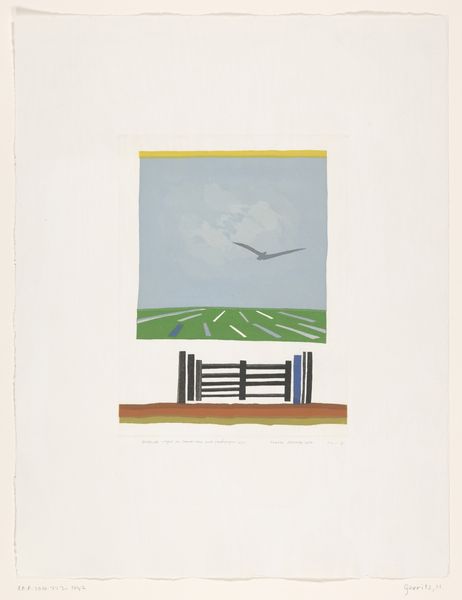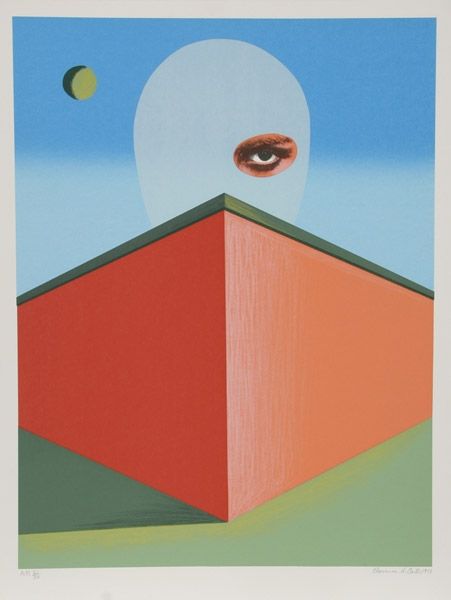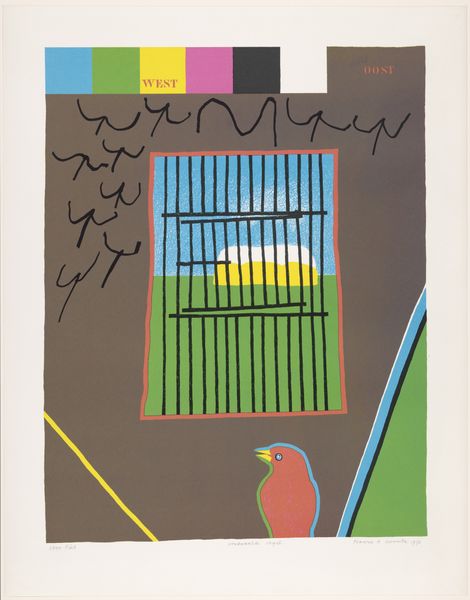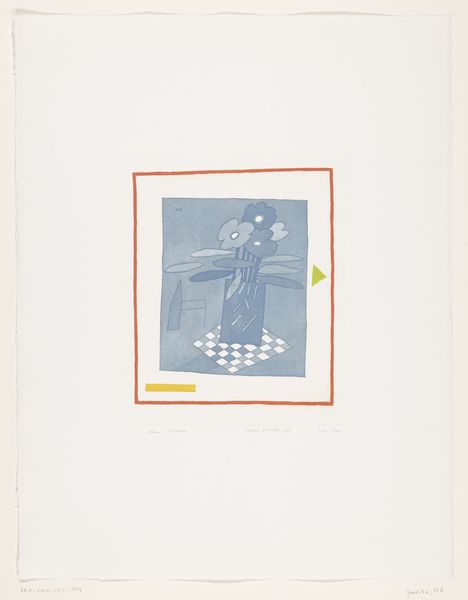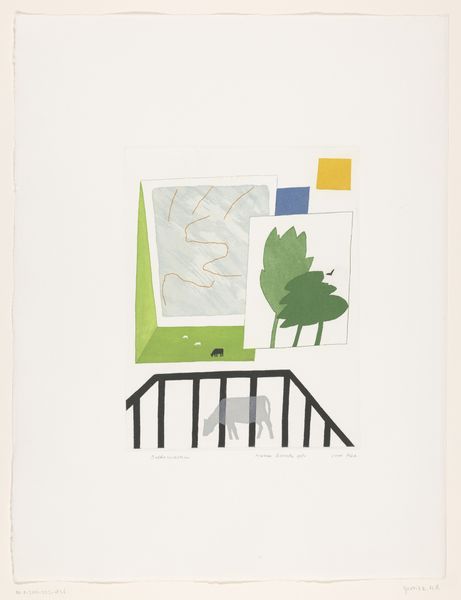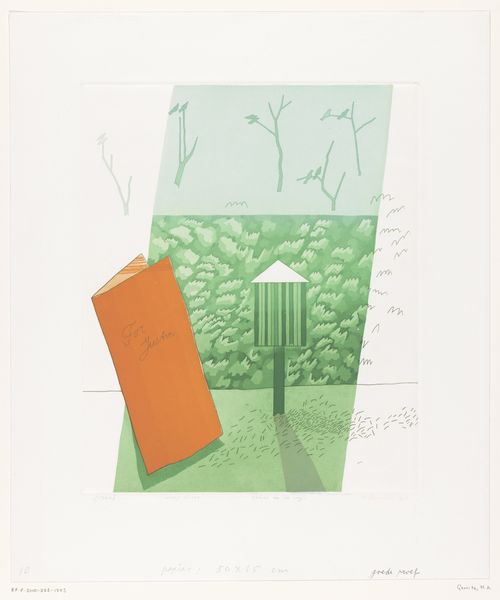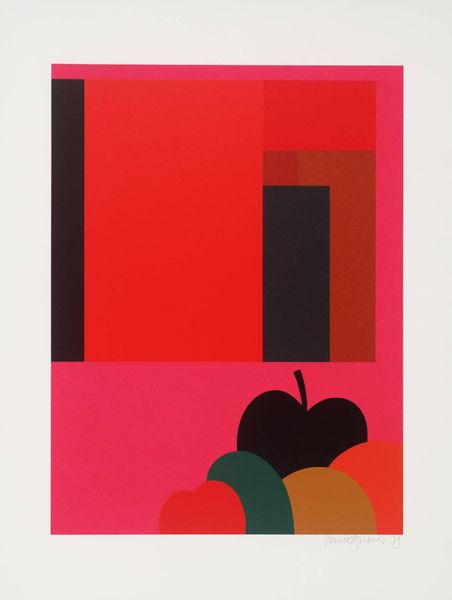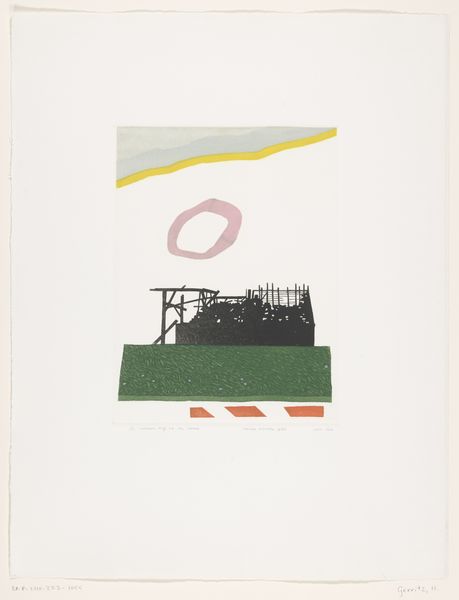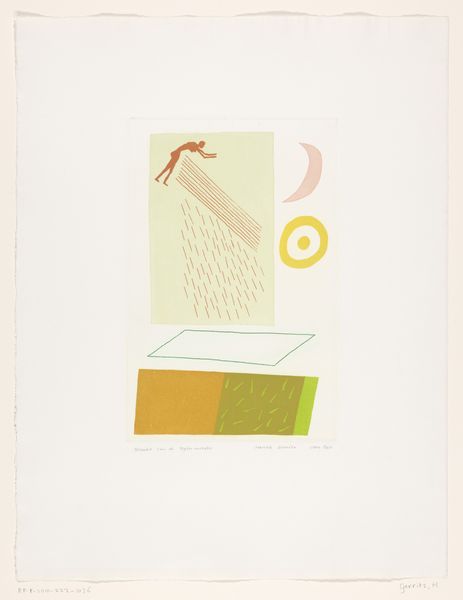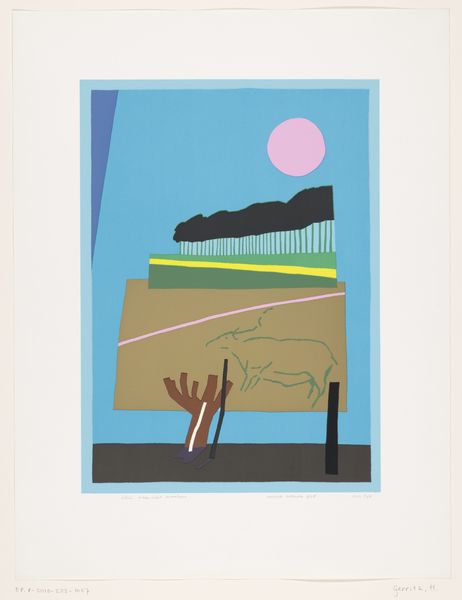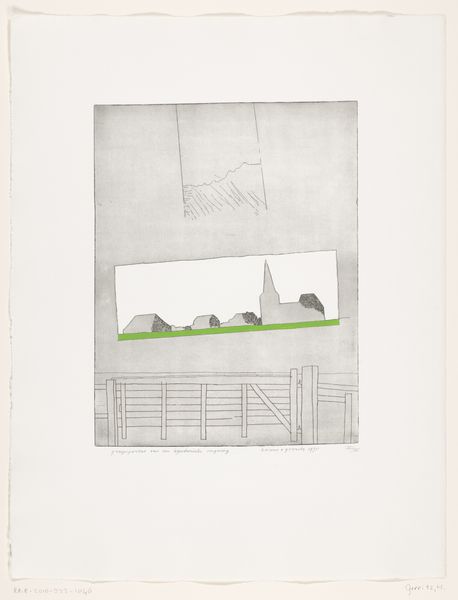
Dimensions: height 650 mm, width 498 mm, height 472 mm, width 342 mm
Copyright: Rijks Museum: Open Domain
Curator: Harrie A. Gerritz created "Op weg naar het zuiden" in 1978, a screenprint currently held here at the Rijksmuseum. It's a compelling piece reflecting a Dutch take on postmodern themes. What strikes you first about it? Editor: It's the boldness of the colors and the simplified forms that grab me immediately. There’s almost a playful flatness to it, even though the geometric shapes create a kind of spatial recession. The stark black bird in the foreground is an interesting focal point. Curator: Gerritz was deeply influenced by the social and political currents of his time. The almost caricaturistic style and the use of what could be seen as banal imagery—a stylized palm tree, an ordinary bird—invite us to question established aesthetic hierarchies and consider the everyday as a site of meaning-making. He pushes us to examine the constructedness of place and identity through a Dutch lens. Editor: Right, and looking at it from a material perspective, the screen printing process is key. It lends itself perfectly to those flat, bold blocks of color, giving the work its distinctive pop art aesthetic. Each layer of color meticulously placed. This choice of printing technique emphasizes accessibility and perhaps a democratizing intent, echoing the spirit of the era. The use of print implies multiples—art for the people, not just the elite. Curator: Precisely. The bird, the grid, and the simplified cityscape operate within a matrix of coded meanings that shift depending on the viewer's social location and understanding. The symbolism could range from environmental critique to social commentary on migration and urbanization. Editor: Thinking about it more, I'm curious about the urban context that informs the scene and the symbolism, especially given the work’s title. Where exactly is it we are headed? To what specific imagined location does it point? It plays on how idealized places are constructed from an artificial sense of “somewhere else.” The medium amplifies this tension for me—making these otherwise rarefied vistas accessible but decidedly abstracted. Curator: It also reflects a critical consciousness towards the romanticization of the "South," common in European artistic traditions, subverting those notions by presenting a manufactured, almost artificial landscape. I see it as challenging colonial gaze embedded in many landscapes before it. Editor: This close look makes me appreciate Gerritz's craft more; he created so much from what appears at first glance a deceptively simple method. The social commentary on landscape art becomes palpable by embracing techniques that made artwork, visually if not economically, accessible. Curator: Absolutely, and through our discussion, I'm struck by how powerfully this piece speaks to enduring conversations around representation, power, and the meaning we attach to place.
Comments
No comments
Be the first to comment and join the conversation on the ultimate creative platform.
